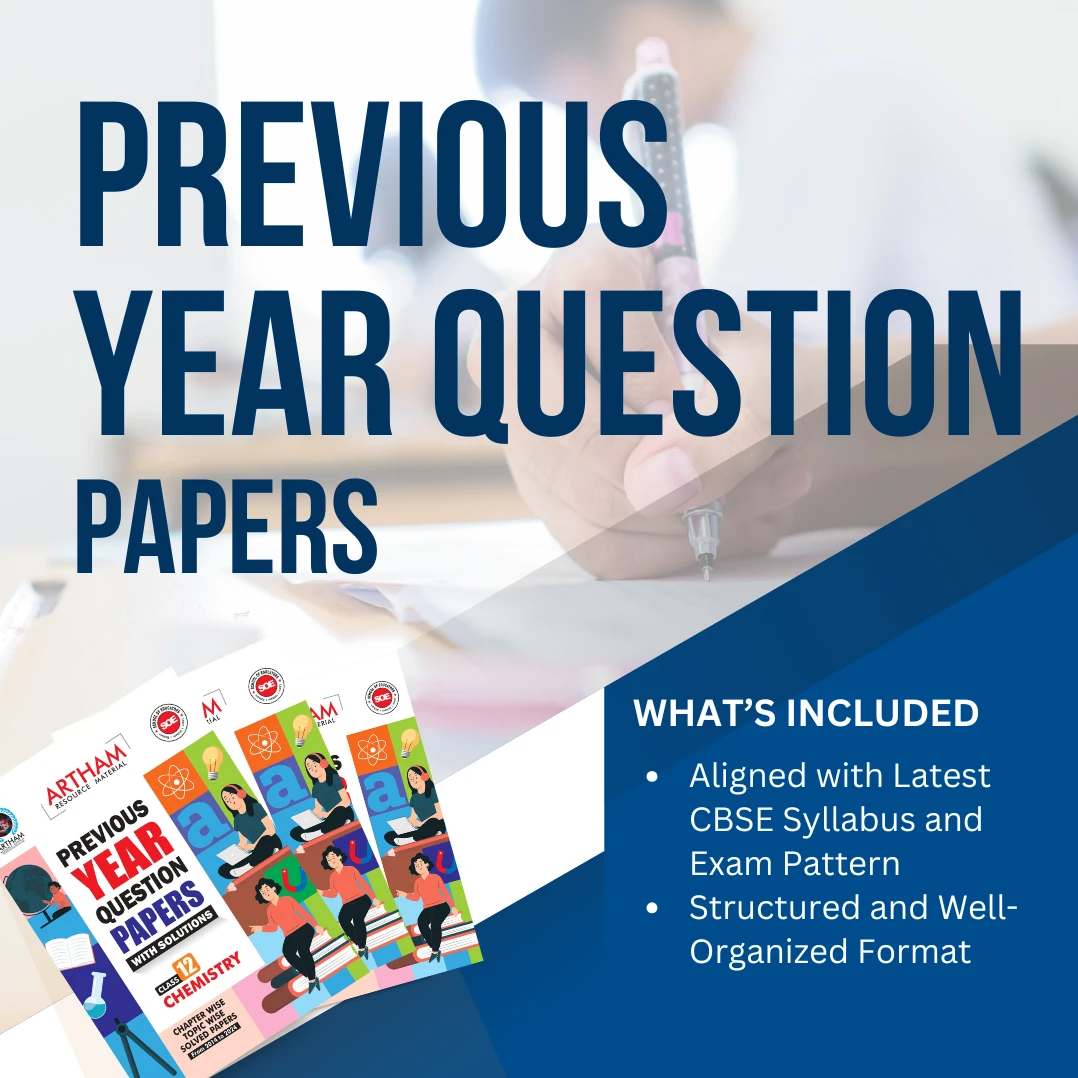Shop Left Sidebar
- CBSE
- Chapter Wise Topic Wise Notes
- Class 10
- Class 9
- Competency-Based Question Bank
- Competitive Exams & Aptitude Tests
- Comprehensive Viva Voice
- Courses
- CUET
- Daily Practice Paper (DPP)
- Diagnostic Assessment
- eBooks
- For New School
- Foundation and Olympiad Study Material
- Gift for Students
- Gift for Teachers
- Half Yearly Sample Question Paper with Solution
- Holiday Homework
- Illustrative Charts
- Journal
- Kindergarten
- Lesson Plan
- Life Skills
- Line by Line Questions
- Mind Maps
- Must Buy
- NCERT Exemplar Solutions
- NCERT Solutions
- Notes
- POWERPOINT PRESENTATIONS
- Pre Launch Stage
- Premium WhatsApp Group
- Previous Year Question Papers
- Previous Year Question Papers with Solutions
- Print version of SOP
- Sample Paper
- Sample Paper with Solutions
- Self Development
- Split -up Syllabus
- Sports and Physical Education
- Standard Operating Manuals
- Study Materials for Students
- Teachers Manual with Lesson Plans
Best seller
-
-100%
₹ 50.00Original price was: ₹ 50.00.₹ 0.00Current price is: ₹ 0.00. -
-100%
₹ 50.00Original price was: ₹ 50.00.₹ 0.00Current price is: ₹ 0.00. -
-100%
₹ 50.00Original price was: ₹ 50.00.₹ 0.00Current price is: ₹ 0.00. -
-100%
₹ 299.00Original price was: ₹ 299.00.₹ 0.00Current price is: ₹ 0.00.
- CBSE
- Chapter Wise Topic Wise Notes
- Class 10
- Class 9
- Competency-Based Question Bank
- Competitive Exams & Aptitude Tests
- Comprehensive Viva Voice
- Courses
- CUET
- Daily Practice Paper (DPP)
- Diagnostic Assessment
- eBooks
- For New School
- Foundation and Olympiad Study Material
- Gift for Students
- Gift for Teachers
- Half Yearly Sample Question Paper with Solution
- Holiday Homework
- Illustrative Charts
- Journal
- Kindergarten
- Lesson Plan
- Life Skills
- Line by Line Questions
- Mind Maps
- Must Buy
- NCERT Exemplar Solutions
- NCERT Solutions
- Notes
- POWERPOINT PRESENTATIONS
- Pre Launch Stage
- Premium WhatsApp Group
- Previous Year Question Papers
- Previous Year Question Papers with Solutions
- Print version of SOP
- Sample Paper
- Sample Paper with Solutions
- Self Development
- Split -up Syllabus
- Sports and Physical Education
- Standard Operating Manuals
- Study Materials for Students
- Teachers Manual with Lesson Plans
Showing all 10 results
-
-50%
Chapter Wise Topic Wise Notes Class 12 Economics Chapter 10 Comparative Development Experiences of India And Its Neighbours
₹ 50.00Original price was: ₹ 50.00.₹ 25.00Current price is: ₹ 25.00.Chapter 10 of the Class 12 Economics syllabus, titled “Comparative Development Experiences of India and Its Neighbours,” delves into the economic trajectories and developmental policies of India, Pakistan, and China. This chapter provides a comprehensive analysis of the similarities and differences in the economic strategies adopted by these countries post-independence. Students will explore various parameters such as GDP growth, sectoral development, human development indicators, and trade patterns to understand how these nations have evolved economically.
-
-50%
Chapter Wise Topic Wise Notes Class 12 Economics Chapter 9 Environment and Sustainable development
₹ 50.00Original price was: ₹ 50.00.₹ 25.00Current price is: ₹ 25.00.The “Chapter Wise Topic Wise Notes Class 12 Economics Chapter 9: Environment and Sustainable Development” offers a comprehensive overview of key concepts related to the environment and its intersection with economic development. This chapter delves into the importance of sustainable development, addressing the need to balance economic growth with environmental conservation. Topics include the causes and effects of environmental degradation, measures for sustainable resource management, and the role of government policies in promoting sustainability.
-
-50%
Chapter Wise Topic Wise Notes Class 12 Economics Chapter 8 Infrastructure (rationalised)
₹ 50.00Original price was: ₹ 50.00.₹ 25.00Current price is: ₹ 25.00.Chapter 8 of Class 12 Economics, titled “Infrastructure,” provides a comprehensive overview of the essential facilities and services required for the economic development of a country. This chapter delves into the significance of infrastructure in both social and economic contexts, highlighting sectors such as energy, transport, communication, health, and education. The rationalised notes simplify complex concepts, offering clear explanations and relevant examples to help students grasp the importance of robust infrastructure in fostering sustainable growth.
-
-50%
Chapter Wise Topic Wise Notes Class 12 Economics Chapter 7 Employment Growth, Informalisation and Other Issues
₹ 50.00Original price was: ₹ 50.00.₹ 25.00Current price is: ₹ 25.00.“Chapter Wise Topic Wise Notes Class 12 Economics Chapter 7: Employment Growth, Informalisation, and Other Issues” provides a comprehensive overview of key concepts and issues related to employment in India. This chapter explores the dynamics of employment growth, the increasing informalisation of the job sector, and other critical issues affecting the labor market. It examines factors influencing employment patterns, the implications of informal work on economic stability, and the challenges faced by various sectors.
-
-50%
Chapter Wise Topic Wise Notes Class 12 Economics Chapter 6 Rural Development
₹ 50.00Original price was: ₹ 50.00.₹ 25.00Current price is: ₹ 25.00.“Chapter Wise Topic Wise Notes Class 12 Economics Chapter 6: Rural Development” offers a comprehensive overview of key concepts related to rural development as outlined in the Class 12 Economics curriculum. This chapter delves into the multifaceted aspects of rural development, including the various schemes and policies aimed at improving the economic and social conditions of rural areas. The notes cover essential topics such as poverty alleviation, rural infrastructure, agricultural development, and the role of government and non-governmental organizations in fostering rural progress.
-
-50%
Chapter Wise Topic Wise Notes Class 12 Economics Chapter 5 Human Capital formation in India
₹ 50.00Original price was: ₹ 50.00.₹ 25.00Current price is: ₹ 25.00.Chapter 5 of Class 12 Economics, “Human Capital Formation in India,” delves into the critical role of human capital in economic development. It explores the concept of human capital, emphasizing education, health, and skills as pivotal components. The chapter discusses the significance of investing in human resources to enhance productivity and growth. It highlights various government initiatives and policies aimed at improving education and healthcare infrastructure.
-
-50%
Chapter Wise Topic Wise Notes Class 12 Economics Chapter 4 Poverty (rationalised)
₹ 50.00Original price was: ₹ 50.00.₹ 25.00Current price is: ₹ 25.00.Chapter 4 of Class 12 Economics, titled “Poverty,” delves into the various dimensions and causes of poverty in India. This chapter provides a comprehensive analysis of the nature and extent of poverty, examining the social and economic factors that contribute to it. It discusses the different measures of poverty, such as absolute and relative poverty, and explores the Poverty Line concept. The chapter also highlights the poverty alleviation programs implemented by the Indian government and evaluates their effectiveness.
-
-50%
Chapter Wise Topic Wise Notes Class 12 Economics Chapter 3 Liberalisation, Privatisation And Globalisation: An Appraisal
₹ 50.00Original price was: ₹ 50.00.₹ 25.00Current price is: ₹ 25.00.The “Chapter Wise Topic Wise Notes for Class 12 Economics – Chapter 3: Liberalisation, Privatisation, and Globalisation: An Appraisal” provides a comprehensive overview of the pivotal economic reforms that have shaped the modern Indian economy. These notes delve into the rationale, processes, and impacts of liberalisation, privatisation, and globalisation (LPG) policies introduced in 1991. Students will gain a thorough understanding of the economic challenges faced by India before these reforms and how the LPG policies aimed to address them.
-
-50%
Chapter Wise Topic Wise Notes Class 12 Economics Chapter 2 Indian Economy (1950-1990)
₹ 50.00Original price was: ₹ 50.00.₹ 25.00Current price is: ₹ 25.00.“Chapter Wise Topic Wise Notes Class 12 Economics Chapter 2 Indian Economy (1950-1990)” offers a comprehensive analysis of India’s economic landscape post-independence until the onset of liberalization in 1990. This chapter delves into the strategies adopted by India to achieve economic growth, including the five-year plans, industrial policies, and agrarian reforms. Key aspects such as the Green Revolution, the role of public and private sectors, and the impact of these policies on different sectors of the economy are thoroughly explored.
-
-50%
Chapter Wise Topic Wise Notes Class 12 Economics Chapter 1 Indian Economy on The Eve of Independence
₹ 50.00Original price was: ₹ 50.00.₹ 25.00Current price is: ₹ 25.00.Chapter 1 of Class 12 Economics, “Indian Economy on The Eve of Independence,” offers an in-depth analysis of the state of the Indian economy just before the country’s independence in 1947. The notes cover key topics such as the agricultural sector’s challenges, the stagnation in industrial development, and the adverse effects of British colonial policies on trade and infrastructure. It also delves into the socio-economic conditions of the population, highlighting widespread poverty and unemployment.
Teaching is one of the hardest and most important jobs in the world. We provide the support that teachers need to transform their subjects into terms that their students will understand.
- Nageen International
- B-162, 4th Floor, DDA Shed, Okhla Industrial Area Phase 1 New Delhi-110020 (India)
- WhatsApp us at +91-95208-11111
- Email: info@educatorsresource.in
- (Monday to Saturday) WhatsApp 24*7
2025 Educator Resources. All Rights Reserved.




